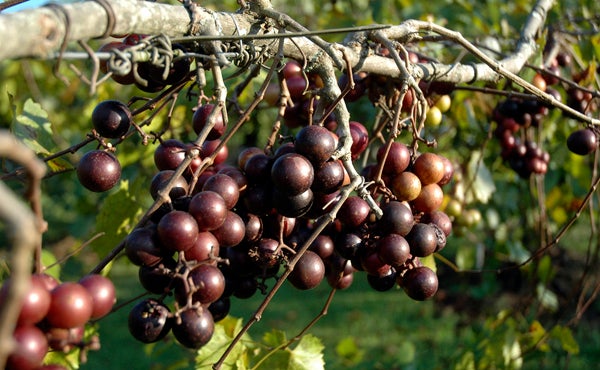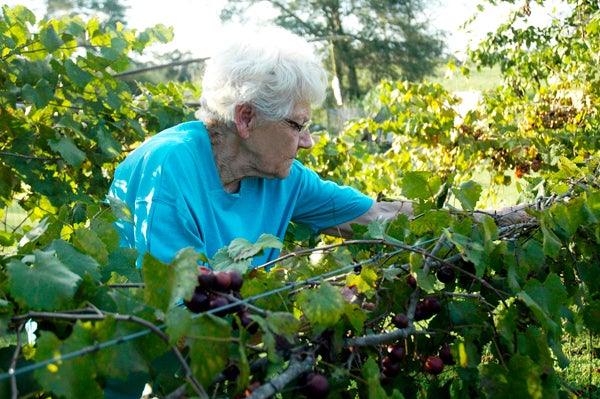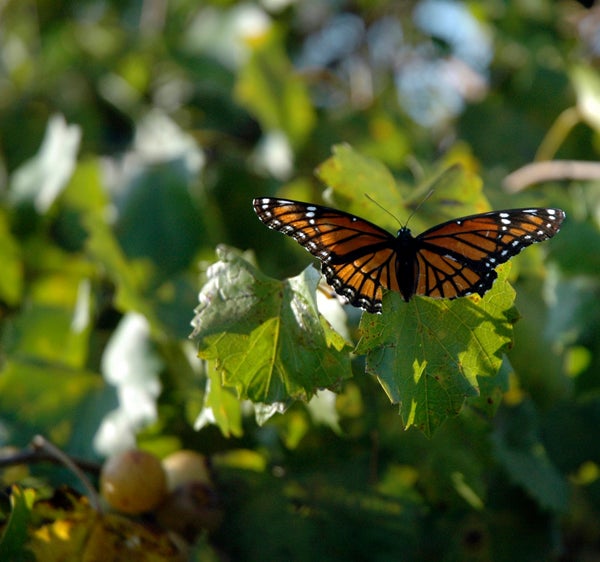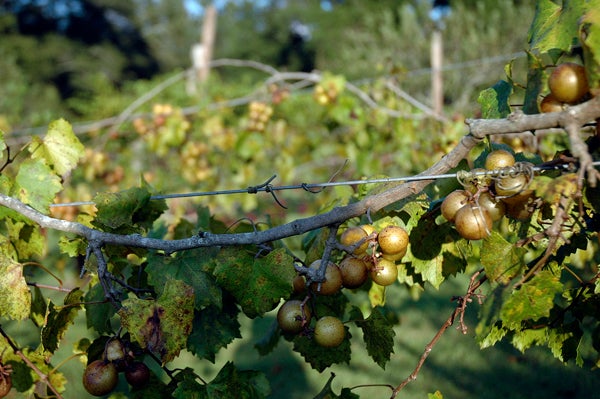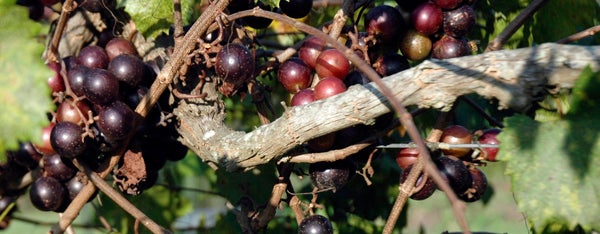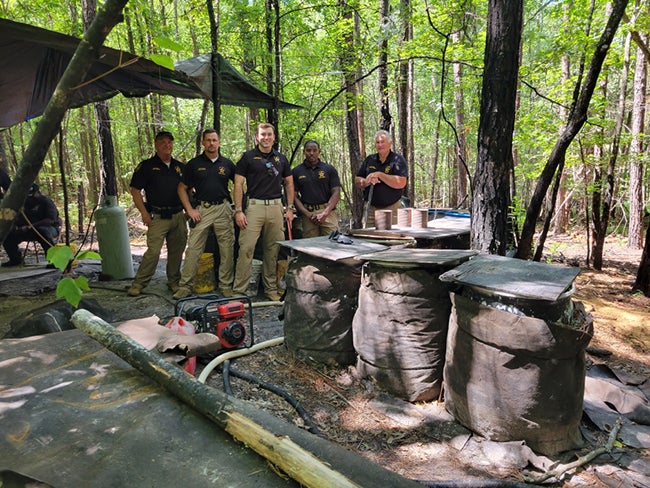‘Vines of the Gods’: Hardins have grown scuppernongs for 20 years
Published 3:00 am Saturday, September 27, 2014
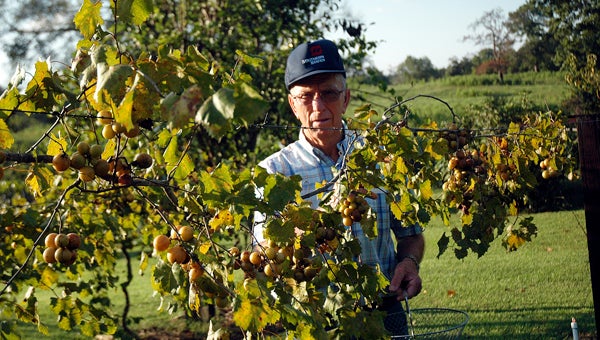
Jerrell Harden picks scuppernongs at his property in the Shiloh community. The Hardens have grown scuppernogs (or muscadines, as they are also called) for 20 years. They allow friends and neighbors to pick the grapes from their property and bring them home. (Messenger Photos / Jaine Treadwell)
When the muscadines get ripe, several things are for certain.
First and foremost, those who have the “vines of the gods” will be surprised at how many friends they have.
And, secondly, the friendly discussions or heated arguments will begin as to whether the fruit is a muscadine or a scuppernong or a bullace.
The argument of local folks is that a scuppernong is bronze in color, the muscadine is purple in color and there’s no such thing as a bullace.
Jerrell and Jeanette Harden of the Shiloh community have been growing “scuppernongs” for about 20 years. The Hardens said they have heard all the arguments and they are satisfied that the scuppernong is a variety of the muscadine and that, yes, there is a similar fruit that is commonly called a bullace.
“A bullace has the same sweet taste as a scuppernong, which we call them. Bullaces mainly grow wild and are smaller than a scuppernong – or muscadine,” Jerrell Harden said. “But no matter what you call them, these ‘grapes” are good.”
Scuppernongs are native to the Southern United States and folks who live outside the South probably pronounced the grape’s name as it is written: scup-per-nong. But in the South the word is pronounced “scuplin.”
Jerrell Harden said scuplins’ are grown all around Pike County and his arbors are small compared to those of many others.
“The vines produce more than we have a use for and we invite people to come and pick what they want,” he said. “We have plenty to share.”
Most of those who accept the Harden’s offer to “come pick” come swinging a bucket to fill to the brim and take home to sit on the porch and savor the sweetness.
And, the outdoors is the place to eat scuplins. If they are enjoyed inside, it’s best to have a spittoon handy.
There’s definitely an art to eating scuppernongs, the Hardens said.
Scuppernongs consist of the hull, the juice, the pulp and the seeds.
“You bite through the hull to get to the sweet juice,” Jeanette Harden said. “When you’ve gotten all the juice, you just spit everything else out.”
Harden, laughingly, said the spitting part is the reason scuplins are best eaten outside.
However, she did say that some people consume the pulp along with the juice but those who do are challenged with separating the seeds from the pulp.
“I don’t think you would want to swallow the seeds,” she said.
Jerrell Harden has found that the sweetness of the scuppernong can be saved for those cold winter months by simply freezing the hulls.
“Not so simply,” Harden said, with a smile. “You have to take a small, sharp blade and slice away the hulls. Then, you can freeze the hulls and eat them right out of the bags.”
Scuplins or muscadines are used in a variety of recipes from pies to cookies and even cakes. The juice from the Southern grapes is a good source of fiber. It is said the grapes have health benefits for the heart and are believed to relieve and prevent leg cramps. However, the most popular uses for muscadines or scuppernongs are cider and wine.
“There are a lot of good things about scuppernongs but the best one is the taste,” Harden said.
Some people prefer the taste of the bronze grapes while other say the purple ones are far and away the sweeter.
But no matter, the folklore of the purple muscadine sets it apart and is worth the telling.
The origin of the story is Roanoke Island in August of 1587. Gov. John White returned to England for supplies and left behind the first settlement in the new English colony of Virginia of 89 men, 17 women and 11 children. One of those children was White’s granddaughter, Virginia Dare, the first English child to be born in the New World.
When White returned to Roanoke Island the colony was abandoned and none of the inhabitants were ever seen again by English eyes.
The legend is that little Virginia left the colony and went to live with the Croatian Indians. She grew into a beautiful young woman and had many suitors, including the noble Okisko and a not so noble Wanchese.
When Virginia refused yet another suitor’s hand, he put a curse on her and transformed her body into that of a snow-white deer.
Believing the deer was his beloved Virginia, Okisko, with the help of a sorcerer, made a magic arrowhead from an oyster shell that would undo the curse.
Wanchese also believed the white deer to be Virginia. He wanted the young maiden so passionately he decided if he could not have the beautiful maiden, he would make sure no one else had her.
Okisko and Wanchese tracked the snow-white deer — Okisko to release her from the curse and Wanchese to kill her. They came to the same place at the same time, pulled their bowstrings and both arrows pierced the deer’s heart. Okisko’s arrow unleashed the spell and Wanchese’s arrow brought death to the beautiful Virginia.
At the place where Virginia died, a vine sprung up and those grapes, with juice as red as blood, were the sweetest that have ever been grown. They are the purple muscadines.


